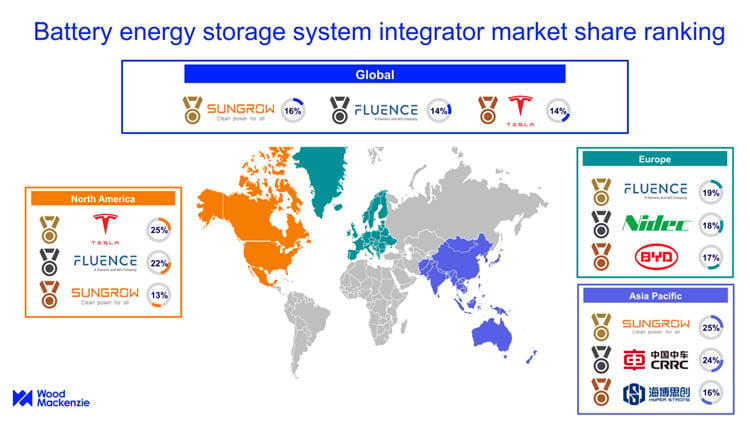Report on Energy Poverty in European Rural Households: Emphasizing Sustainable Development Goals
Introduction
A recent report by the European Commission’s Joint Research Centre (JRC) highlights that nearly 48 million Europeans struggle to heat their homes, with rural households disproportionately affected. This report underscores the intersection of energy poverty and sustainable development, emphasizing the critical role of Sustainable Development Goals (SDGs) in addressing this crisis.
Energy Poverty in Rural Europe
Definition and Impact
Energy poverty is defined as the inability of households to afford essential energy services such as heating and cooling. This condition adversely affects health and well-being, particularly during harsh winters and frequent heatwaves, linking directly to SDG 3 (Good Health and Well-being) and SDG 7 (Affordable and Clean Energy).
Challenges Faced by Rural Households
- Lower-than-average incomes contributing to limited energy affordability (SDG 1: No Poverty)
- Older, larger, and less energy-efficient housing stock compared to urban areas (SDG 11: Sustainable Cities and Communities)
- On average, rural households spend approximately 7% of their income on energy
Progress in Energy Efficiency
Despite challenges, rural communities lead in energy efficiency improvements:
- 29% of rural residents undertook energy performance renovations between 2018 and 2023, compared to 23% in urban areas
- Upgrades include improved insulation, new windows, and efficient heating systems (SDG 9: Industry, Innovation, and Infrastructure)
Renewable Energy Potential
- Rural areas have larger roof spaces and higher homeownership rates (78% vs. 55% in cities), facilitating rooftop solar installations
- Potential generation of approximately 2,200 kWh per person annually from rooftop solar, covering over one-third of household energy needs (SDG 7: Affordable and Clean Energy; SDG 13: Climate Action)
Regional Disparities in Energy Poverty
Most Affected Regions
Eastern and Southern Europe experience the highest rural energy poverty rates:
- Bulgaria, Romania, and Greece are the most affected countries
- Portugal, Cyprus, Croatia, and Lithuania also face significant challenges
- In Northern Europe (Latvia, Estonia, Sweden), cold climates and ageing buildings exacerbate energy needs
Innovative Measurement and Policy Implications
Development of a New Energy Poverty Index
The JRC developed a comprehensive energy poverty index combining:
- Energy expenditure
- Inability to keep homes warm
- Arrears on utility bills
- Poor housing conditions
- Income below 60% of the national average
This tool supports targeted interventions aligned with SDG 10 (Reduced Inequalities) and SDG 16 (Peace, Justice, and Strong Institutions).
EU’s Commitment and Strategic Goals
- Tackling energy poverty is central to the EU’s just energy transition strategy
- Buildings account for 40% of the EU’s energy consumption and 35% of greenhouse gas emissions, highlighting the importance of energy efficiency (SDG 7, SDG 13)
- Promotion of renewable energy and building upgrades is vital for climate goals and social equity
Contribution to the EU Rural Observatory
The JRC’s findings feed into the EU Rural Observatory initiative, which collects data to inform place-based policies. The report emphasizes that addressing rural energy poverty is both a social priority and an opportunity to enhance energy resilience and accelerate decarbonization across Europe (SDG 11, SDG 13).
Conclusion
As the European Union advances toward climate neutrality, the rural energy transition emerges as a cornerstone for a greener and more equitable Europe. This aligns with multiple Sustainable Development Goals, including poverty reduction, clean energy access, climate action, and sustainable communities, underscoring the integrated approach necessary to resolve energy poverty in rural areas.
1. Sustainable Development Goals (SDGs) Addressed or Connected
- SDG 7: Affordable and Clean Energy
- The article focuses on energy poverty and access to affordable, reliable, and sustainable energy in rural European households.
- SDG 1: No Poverty
- Energy poverty is a form of deprivation linked to income levels and affordability, directly relating to poverty reduction.
- SDG 11: Sustainable Cities and Communities
- Improving housing conditions and energy efficiency in rural areas contributes to sustainable community development.
- SDG 13: Climate Action
- The article highlights renewable energy adoption and building efficiency as key to reducing greenhouse gas emissions and achieving climate neutrality.
- SDG 3: Good Health and Well-being
- Energy poverty impacts health and well-being, especially during extreme weather conditions.
2. Specific Targets Under Those SDGs Identified
- SDG 7: Affordable and Clean Energy
- Target 7.1: By 2030, ensure universal access to affordable, reliable, and modern energy services.
- Target 7.2: Increase substantially the share of renewable energy in the global energy mix.
- Target 7.3: Double the global rate of improvement in energy efficiency.
- SDG 1: No Poverty
- Target 1.2: Reduce at least by half the proportion of men, women, and children living in poverty in all its dimensions.
- SDG 11: Sustainable Cities and Communities
- Target 11.1: Ensure access for all to adequate, safe and affordable housing and basic services.
- Target 11.6: Reduce the adverse per capita environmental impact of cities, including by paying special attention to air quality and municipal and other waste management.
- SDG 13: Climate Action
- Target 13.2: Integrate climate change measures into national policies, strategies, and planning.
- SDG 3: Good Health and Well-being
- Target 3.9: Reduce the number of deaths and illnesses from hazardous chemicals and air, water and soil pollution and contamination.
3. Indicators Mentioned or Implied to Measure Progress
- Energy Poverty Index
- Combines energy expenditure with four key indicators:
- Inability to keep homes warm
- Arrears on utility bills
- Poor housing conditions
- Income levels below 60% of the national average
- Combines energy expenditure with four key indicators:
- Energy Expenditure as Percentage of Income
- Rural households spending about 7% of income on energy is a measurable indicator of energy affordability.
- Renovation and Energy Efficiency Uptake
- Percentage of rural residents undertaking energy performance renovations (29% between 2018-2023).
- Renewable Energy Generation
- Rooftop solar energy generation potential (approx. 2,200 kWh per person annually) as a measure of renewable energy adoption.
- Greenhouse Gas Emissions from Buildings
- Buildings account for 35% of EU greenhouse gas emissions; reduction in this figure can indicate progress.
4. Table of SDGs, Targets, and Indicators
| SDGs | Targets | Indicators |
|---|---|---|
| SDG 7: Affordable and Clean Energy |
|
|
| SDG 1: No Poverty |
|
|
| SDG 11: Sustainable Cities and Communities |
|
|
| SDG 13: Climate Action |
|
|
| SDG 3: Good Health and Well-being |
|
|
Source: openaccessgovernment.org








